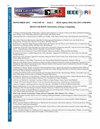为推荐而嵌入异构信息网络的双视图融合
IF 1.3
4区 工程技术
Q3 COMPUTER SCIENCE, INFORMATION SYSTEMS
引用次数: 0
摘要
异构信息网络(HIN)包含丰富的语义信息,因为它们涉及多种类型的节点和边。异构网络嵌入通过将网络信息嵌入到低维节点表示中来分析 HIN。然而,现有的异构嵌入方法要么忽略了远节点之间隐含的拓扑关系,要么忽略了节点特征和元路径信息的差异性,这反映出从单一视图提取 HIN 嵌入可能会导致信息提取不完整。为了使信息提取更加完整,我们提出了一种针对推荐任务的双视图融合异构信息网络嵌入方法(DFHE)。具体来说,它从远程拓扑视图和语义聚合视图中提取异构信息网络的有效特征:远程拓扑视图使用元图引导的随机漫步来捕捉远程节点之间的拓扑关系,并通过图卷积网络(GCN)编码器学习嵌入;而语义聚合视图则使用注意力机制来学习不同元路径、节点关系的重要性,并聚合每个元路径的语义信息。在两个真实世界网络数据集上的实验结果表明,与基线相比,应用 DFHE 后的推荐任务性能有所提高。即使删除了一些元路径,这种改进依然存在,从而验证了该方法的有效性。本文章由计算机程序翻译,如有差异,请以英文原文为准。
Dual-View Fusion of Heterogeneous Information Network Embedding for Recommendation
Heterogeneous Information Networks (HINs) contain rich semantic information due to their involvement of multiple types of nodes and edges. Heterogeneous network embedding is used to analyze HINs by embedding network information in low-dimensional node representations. However, existing heterogeneous embedding methods either ignore the implicit topological relationships between distant nodes or neglect nodes features and meta-paths information disparities, which reflects that extracting HIN embeddings from a single view may lead to incomplete information extraction. In order to make the information extraction more complete, we propose a dual-view fusion heterogeneous information network embedding method (DFHE) for recommendation tasks. Specifically, it extracts effective features from HINs from both the remote topology view and the semantic aggregation view: the remote topology view uses a meta-graph-guided random walk to capture the topological relationships between remote nodes and learns embeddings through a graph convolutional network (GCN) encoder, while the semantic aggregation view uses an attention mechanism to learn the importance of different meta-paths, node relationships, and aggregates the semantic information of each meta-path. Experimental results on two real-world network datasets demonstrate an enhancement in recommendation task performance under the application of DFHE, compared to the baseline. This improvement persists even when some meta-paths are deleted, thereby verifying the methods effectiveness.
求助全文
通过发布文献求助,成功后即可免费获取论文全文。
去求助
来源期刊

IEEE Latin America Transactions
COMPUTER SCIENCE, INFORMATION SYSTEMS-ENGINEERING, ELECTRICAL & ELECTRONIC
CiteScore
3.50
自引率
7.70%
发文量
192
审稿时长
3-8 weeks
期刊介绍:
IEEE Latin America Transactions (IEEE LATAM) is an interdisciplinary journal focused on the dissemination of original and quality research papers / review articles in Spanish and Portuguese of emerging topics in three main areas: Computing, Electric Energy and Electronics. Some of the sub-areas of the journal are, but not limited to: Automatic control, communications, instrumentation, artificial intelligence, power and industrial electronics, fault diagnosis and detection, transportation electrification, internet of things, electrical machines, circuits and systems, biomedicine and biomedical / haptic applications, secure communications, robotics, sensors and actuators, computer networks, smart grids, among others.
 求助内容:
求助内容: 应助结果提醒方式:
应助结果提醒方式:


